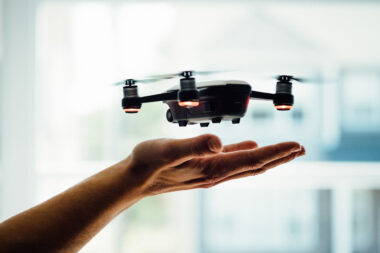Introduction
Autonomous construction equipment represents a transformative shift in the construction industry, leveraging advanced technologies to enhance efficiency, safety, and productivity. These machines, equipped with sensors, artificial intelligence, and automation systems, can perform various tasks traditionally carried out by human operators.
Components of Autonomous Construction Equipment
- Sensors:
- Purpose: Sensors are fundamental for perception, providing real-time data about the equipment’s surroundings.
- Types:
- LiDAR (Light Detection and Ranging) measures distances using laser light, creating detailed 3D maps for navigation.
- Radar (Radio Detection and Ranging): uses radio waves to detect objects and obstacles, aiding in collision avoidance.
- Cameras: Capture visual information for object recognition, lane detection, and situational awareness.
- Ultrasonic Sensors: Measure distances using sound waves, assisting in proximity detection.
- Artificial Intelligence (AI) and Machine Learning (ML):
- Purpose: AI and ML are pivotal for processing sensor data, making decisions, and learning from experience.
- Functions:
- Object Recognition: Identifies and classifies objects in the environment.
- Path planning determines the optimal route for the equipment based on real-time conditions.
- Decision-Making: Allows the equipment to adapt to dynamic situations and unforeseen obstacles.
- Automation and Control Systems:
- Purpose: These systems are responsible for controlling the equipment’s movement, operations, and coordination.
- Functions:
- Autonomous navigation guides the equipment along predetermined paths or dynamically adjusted routes.
- Task Execution: Controls the operation of tools and machinery for construction tasks.
- Coordination: Enables collaboration between multiple autonomous machines on a construction site.
- Communication Technologies:
- Purpose: Facilitates communication between autonomous equipment and central control systems.
- Types:
- 5G and Beyond: High-speed and low-latency communication for real-time data exchange.
- Wireless Networks: Wi-Fi and other communication protocols for connectivity.
- Navigation and Positioning Systems:
- Purpose: Provides accurate location information for precise navigation and operation.
- Technologies:
- GPS (Global Positioning System): satellite-based positioning system for global accuracy.
- GNSS (Global Navigation Satellite System): Includes additional satellite constellations for improved precision.
- Telematics and Remote Monitoring:
- Purpose: Enables remote monitoring and management of equipment status and performance.
- Features:
- Telematics systems collect and transmit equipment data in real-time.
- Remote Diagnostics: Allows technicians to assess and troubleshoot issues remotely.
- Control Interfaces:
- Purpose: User interfaces for operators and technicians to interact with and control the equipment.
- Types:
- Touchscreens: intuitive interfaces for adjusting settings and monitoring performance.
- Joysticks or Controllers: Manual control options for situations requiring human intervention.
- Energy Storage and Power Management:
- Purpose: Autonomous equipment may use electric power or hybrid systems.
- Features:
- Battery Systems: For electric-powered equipment.
- Hybrid Systems: Combine internal combustion engines with electric power for enhanced efficiency.
- Safety Systems:
- Purpose: Ensures the safety of the equipment, operators, and bystanders.
- Components:
- Collision Avoidance Systems: Utilize sensors and AI to detect and avoid obstacles.
- Emergency Stop Mechanisms: Instantly halt equipment operation in case of emergencies.
- Data Storage and Processing Units:
- Purpose: Store and process large volumes of data generated by sensors and systems.
- Components:
- Onboard Computers: Process data locally for real-time decision-making.
- Data Storage Systems: Store historical data for analysis and learning.
- Environmental Sensors:
- Purpose: Monitor environmental conditions affecting equipment operation.
- Examples:
- Temperature Sensors: Prevent overheating and ensure optimal operating conditions.
- Humidity Sensors: Monitor moisture levels for equipment protection.
Algorithms Used
- Path Planning Algorithms:
- Dijkstra’s Algorithm: Used for finding the shortest path between nodes in a graph, applicable for determining optimal routes on construction sites.
- An algorithm balances efficiency and accuracy in finding the best path, incorporating heuristics to guide the search.
- Obstacle Avoidance Algorithms:
- Potential Fields Algorithm: Models the environment as a field of attractive and repulsive forces to navigate around obstacles.
- Reactive Navigation Algorithms: Real-time adjustments to movement based on immediate sensor inputs to avoid collisions.
- Machine Learning Algorithms:
- Supervised Learning: Trained on labeled data to recognize and classify objects in the construction environment.
- Reinforcement Learning: Enables the system to learn optimal decision-making strategies through trial and error.
- Localization Algorithms:
- Simultaneous Localization and Mapping (SLAM): Used to construct and update a map of the environment while simultaneously tracking the equipment’s location.
- Extended Kalman Filter (EKF): integrates sensor measurements over time to estimate the equipment’s position and orientation.
- Control Algorithms:
- Proportional-Integral-Derivative (PID) Control: Regulates equipment movement and stability by adjusting control inputs based on error signals.
- Model Predictive Control (MPC): Optimizes control inputs over a finite time horizon, considering dynamic constraints.
- Task Planning Algorithms:
- Graph-based Task Planning: Models construction tasks as a graph, with nodes representing actions and edges representing dependencies.
- Task Allocation Algorithms: Optimizes the assignment of tasks among multiple autonomous construction equipment units.
- Communication Algorithms:
- Message Queuing Telemetry Transport (MQTT) is a lightweight publish-subscribe messaging protocol for efficient communication between equipment and control systems.
- Advanced Message Queuing Protocol (AMQP): Ensures reliable and secure communication between distributed systems.
- Data Security Algorithms:
- Public Key Infrastructure (PKI): utilized for secure key exchange and digital signatures, ensuring data integrity.
- Transport Layer Security (TLS) and Secure Sockets Layer (SSL): encryption protocols for secure communication between autonomous equipment and central systems.
- Sensor Fusion Algorithms:
- Kalman Filtering: Combines data from multiple sensors to improve accuracy in estimating the equipment’s position and orientation.
- Sensor Data Fusion: Integrates information from various sensors to create a comprehensive and reliable perception of the environment.
- Predictive maintenance algorithms:
- Failure Prediction Models: Analyze historical and real-time data to predict potential equipment failures.
- Anomaly Detection Algorithms: Identify unusual patterns indicating potential issues that may require maintenance.
Integration of cutting-edge technologies, real-time data processing, and adaptive learning in autonomous construction equipment
- Cutting-edge Technologies:
- Sensor Fusion: Autonomous construction equipment relies on a diverse array of sensors, including LiDAR, radar, cameras, GPS, and environmental sensors. Sensor fusion techniques integrate data from these sensors, providing a comprehensive and accurate perception of the construction environment.
- Artificial Intelligence (AI) and Machine Learning (ML): Advanced AI and ML algorithms enable equipment to process vast amounts of data in real-time. These algorithms play a crucial role in object recognition, path planning, and decision-making.
- Telematics and Connectivity: Telematics systems facilitate continuous data transmission between autonomous equipment and centralized platforms. High-speed wireless connectivity, such as 5G, ensures seamless communication for remote monitoring and control.
- Energy-efficient Systems: Autonomous construction equipment often incorporates energy-efficient systems, leveraging innovations in electric and hybrid power sources. These technologies aim to maximize operational efficiency while minimizing environmental impact.
- Real-time Data Processing:
- Onboard Computing: Powerful onboard computers process data in real-time, allowing the equipment to make immediate decisions based on the analyzed information.
- Object Recognition: AI algorithms process visual and sensor data to recognize and categorize objects in the construction environment. This capability is essential for navigating and interacting with one’s surroundings.
- Path Planning: Real-time data processing is fundamental to dynamic path planning. The equipment continuously evaluates its surroundings and adjusts its route to optimize efficiency and safety.
- Adaptive Learning:
- Machine Learning Models: Autonomous construction equipment incorporates machine learning models that continuously learn and adapt to the unique characteristics of the construction site.
- Predictive Analytics: Adaptive learning enables predictive analytics for maintenance, performance optimization, and operational efficiency. The equipment can anticipate issues and proactively address them.
- Task Optimization: Over time, the equipment learns from its experiences, optimizing task execution and decision-making based on historical data.
- Safety and Emergency Systems:
- Collision Avoidance: Real-time data processing is crucial for collision avoidance systems. Sensors detect obstacles, and algorithms make split-second decisions to avoid collisions.
- Emergency Stop Mechanisms: In emergency situations, the immediate halting of operations is facilitated by robust emergency stop mechanisms, ensuring the safety of the equipment and surrounding personnel.
- Continuous Improvement and Upgrades:
- Remote Updates: Autonomous construction equipment often allows for remote software updates, enabling continuous improvement without the need for physical interventions.
- Integration with Central Systems: Seamless integration with central control systems ensures that the equipment stays up-to-date with the latest algorithms, security measures, and industry advancements.
Conclusion
The integration of autonomous construction equipment marks a transformative era in the construction industry. With cutting-edge technologies, real-time data processing, and adaptive learning, these machines redefine efficiency, safety, and precision in construction projects. As we witness the continued evolution of autonomous machinery, it is clear that the future of construction lies in the hands of intelligent, self-operating equipment, reshaping the landscape of how we build and innovate. The journey towards fully autonomous construction sites is underway, promising a future where projects are executed with unparalleled accuracy and effectiveness.



